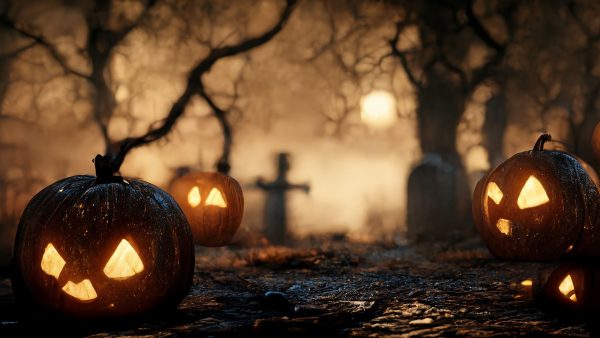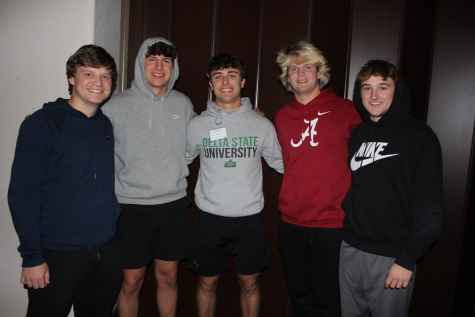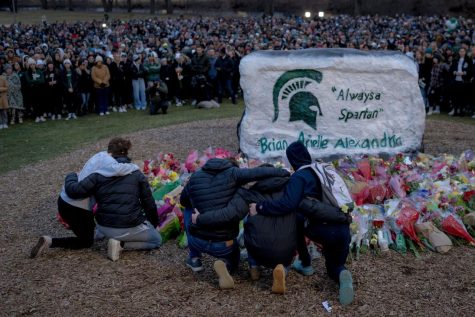Origins of Thanksgiving

Thanksgiving food
The highlight of the month of November can probably be agreed upon to be the holiday of Thanksgiving. Next to Christmas, it is one of the best holidays to gather family around a table to share a nice, solid meal together. Aside from all this fun and cheer, I wondered about the details regarding how the holiday came to be. Did it really gain its prominence just from the Pilgrims and the Wampanoag “Indians” at Plymouth? What is the history behind the traditional Thanksgiving meal?
Providing a bit of background, Thanksgiving’s origins weren’t established as a way of getting along with the Wampanoag. People across Europe traditionally established a day during the second week of October to celebrate the harvest. The Pilgrims, being from Europe themselves, were delayed in celebrating this by the long journey to North America, and thus had to celebrate it when they arrived. They shared it with the “Indians” as a way of getting a share of their food, while “friendly relations” were a secondary goal.
After the First Thanksgiving in 1621, presidents would occasionally call for a Thanksgiving Day celebration, which was not necessarily a holiday and never gained a nation-wide acceptance. Many of these early celebrations included turkey. Alexander Hamilton once remarked that, “No citizen of the U.S. shall refrain from turkey on Thanksgiving Day.”
Thanksgiving was finally declared a national holiday in 1863 by President Abraham Lincoln, but it wasn’t until the early 1900s that the holiday gained national prominence. This was due to the importance of things such as turkey and stuffing being taught to new immigrants as a way of Americanizing them.
In the following paragraphs, I will discuss the relation between the typical modern day Thanksgiving foods and those at the First Thanksgiving. (For a quick summary of these, here is an interactive graphic I have made.)
Turkey
The hallmark of the meal, the Thanksgiving turkey, may or may not have actually been served at the First Thanksgiving. However, the best existing account of the Pilgrims’ harvest feast comes from colonist Edward Winslow, author of Mourt’s Relation: A Journal of the Pilgrims at Plymouth. Winslow’s first-hand account of the First Thanksgiving included no explicit mention of turkey. It did, however, make mention of the colonists gathering “wild fowl”, though that could have just as likely have meant ducks or geese rather than turkey. He did note, however, that the Wampanoag king sent five deer to the colonists for the feast, indicating that they did eat venison, along with fish and shellfish, which were staple foods of the Pilgrims’ diets.
Another colonist, William Bradford, wrote in a journal that the colonists hunted wild turkeys during the autumn of 1621. Due to this reason and that the turkey was an indigenous American bird that was big enough to easily feed a typical family, the turkey was decided to be the main dish for a Thanksgiving meal.
On a side note, another factor that helped spread the popularity of turkey as a holiday delicacy would be the publishing of Charles Dickens’s A Christmas Carol when Scrooge magnanimously sends the Cratchit family a Christmas turkey.
Mashed Potatoes/ Potato Dish
This part of the meal can easily be noted as not pertaining to the First Thanksgiving. At the time of Plymouth Colony in 1621, potatoes weren’t even present in North America, let alone at the meal. Having only been introduced much later, potatoes were introduced as a dish during the 1900s when Thanksgiving became popular.
Pumpkin Pie/ Pies in General
Similar to potatoes, pies aren’t a feasible dish to have been served at the First Thanksgiving due to the lack of wheat having been grown in North America and the lack of butter. No wheat = no flour=no pie crust=NO PIE. They also lacked any sort of oven to bake a pie if they could. What is likely to have been served instead was a mixture pumpkin, spices, and herbs cooked over a fire into a stew.
Cranberry Sauce
Cranberries were likely to have been served at the First Thanksgiving, though not in the form of a sauce. They were suitable for a meal because the cranberry is native to North America, but the colonists lacked the sugar required to make it into the sauce. While sugar was present, it was a very valuable item at the time and wouldn’t have been wasted in the use of a sauce.
Being a big part of the modern day United States, this meal has been largely influenced by the great melting pot of cultures and traditions, causing the items in the meal to vary from household to household. These staple items, however, always seem to appear regardless of the family’s beliefs, habits, or traditions.

I joined this class to fill out my schedule and it seems pretty cool. I am a senior, this is my first year on staff, and I am a swimmer.














Quill Critic • Nov 29, 2017 at 11:47 am
You forgot about the green beans and corn!!!! Also what about Mac N Cheese? C’mon man you have to know this stuff if your going to write about the food!